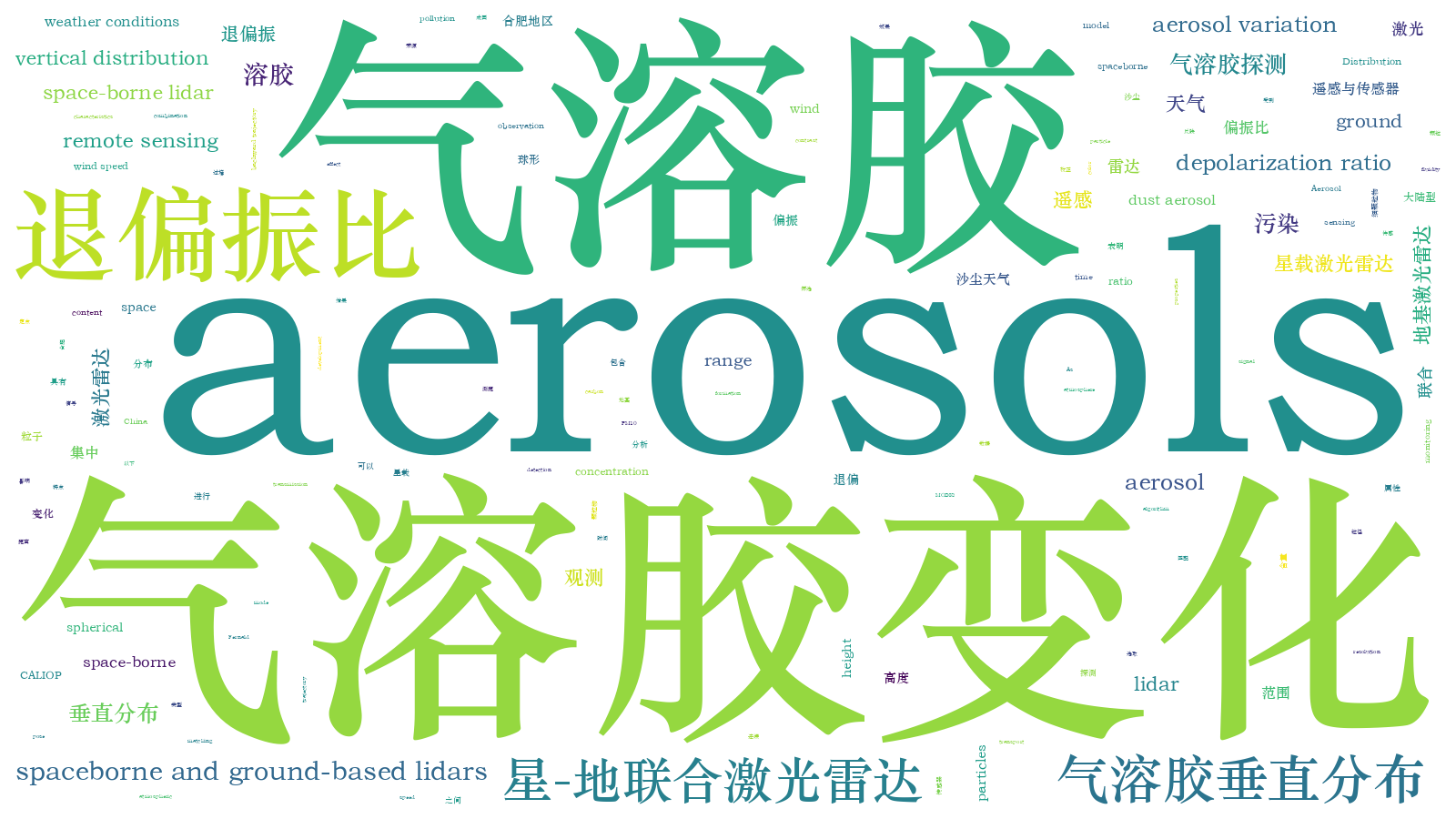星-地激光雷达联合观测合肥地区的气溶胶垂直分布  下载: 1240次
下载: 1240次
Objective As aerosols easily spread biological organisms (such as viruses and germs) and exert an extinction effect, they pose serious threats to public health and travel. In addition, with the rapid development of China's economy, intensive industrial carbon emissions and automobile exhaust caused the increase of the amounts of man-made aerosols in many areas of China. Therefore, monitoring these aerosols by remote sensing is necessitated. Joint observations by space-borne and ground-based lidars can capture the temporal and spatial changes in aerosol emissions. The comparative studies under various weather conditions were rarely reported. The differences among the different weather conditions are still unclear. In this paper, we filtered the observation Aerosol-lidar data by matching the time at which the spaceborne CALIOP transits through Hefei under four typical weather conditions: dusty, cloudy, moderately polluted without clouds, and moderately polluted with clouds. We conducted joint aerosol observations in Hefei, and analyzed the types of aerosols, their changes, and the causes and sources of aerosol pollution.
Methods We compared the vertical distributions and profiles of the aerosols in the observation data of Aerosol-lidar and CALIOP. Using the PM2.5and PM10 concentration data at the ground stations, we also determined the changes, vertical distributions, and causes of aerosols. The horizontal aerosol distributions were determined from the remote-sensing true-color images of MODIS. The causes of aerosol changes were deduced from the wind speeds and directions near the ground. Finally, the backward trajectories in the four study cases were analyzed in HYPSLIT mode. The lidar equation by the traditional Fernald algorithm was used in this article.
Results and Discussions According to the joint observations, the polluted dust aerosol in dusty (lightly polluted) weather was concentrated in the 0.8- to 1.6-km height range, and the dust type were dust and polluted dust. The depolarization ratio was concentrated in the 0.18--0.20 range. In cloudy weather, the main dust type was polluted continental type concentrated in the 0.4- to 1.2-km height range, with depolarization ratios between 0.015 and 0.020. The aerosol content was very small and the particles were fine and spherical. In moderately polluted cloudless weather, polluted dust coexisted with polluted continental-type aerosols. The particles were concentrated in the 0.3- to 1.3-km height range, and the depolarization ratio was below 0.080, indicating an obvious spherical attribute. In moderately polluted cloudy weather, polluted dust coexisted with polluted continental-type aerosols again, but the main height range was 0.8--1.4km, and the depolarization ratio ranged from 0.075 to 0.100, indicating small-sized spherical particles. Small aerosols showed the properties of spherical particles with low depolarization ratios. The joint observations of space-borne and ground-based lidar more accurately captured and characterized the aerosol distributions at different time and from different locations than single observations. Although the ground-based lidar results were more accurate, the space-borne lidar provided better resolution for observing the spatial changes of aerosols. NOAA provided the HYSPLIT backward trajectory model for analyzing the sources and transport paths of the aerosols in the four weather cases. The HYSPLIT results confirmed different sources of the aerosols, to determine different conditions of aerosol formation by combining with the wind speeds and directions.
Conclusions Cloudy weather conditions affected the detection of the bottom aerosols by the space-borne lidar. To better obtain the aerosol content and the characteristics of its change, the range-corrected signal was continuously observed at fixed point by the ground-based lidar. The aerosol changes largely differed under different weather conditions, and the types, causes and sources of aerosols were also highly variable. When the stratification of the atmosphere is stable, aerosols tend to accumulate locally and cannot diffuse; in contrast, when the atmospheric fluidity is strong, a small amount of pollutant dust mixes with the local aerosols and the weather becomes hazy, resulting from the change and transmission of aerosols. The combination of various data, such as lidar observations and ground particle-concentration data, wind speed, and wind direction, can explain the changes and causes of aerosols. In future work, we should combine these data into comprehensive observations of weather changes, and thereby build a model for monitoring urban aerosol pollution.
杨昊, 谢晨波, 方志远, 王邦新, 邢昆明, 曹也. 星-地激光雷达联合观测合肥地区的气溶胶垂直分布[J]. 中国激光, 2021, 48(1): 0110001. Hao Yang, Chenbo Xie, Zhiyuan Fang, Bangxin Wang, Kunming Xing, Ye Cao. Joint Observations of Vertical Distribution of Aerosols in Hefei Area by Spaceborne and Ground-Based Lidars[J]. Chinese Journal of Lasers, 2021, 48(1): 0110001.







